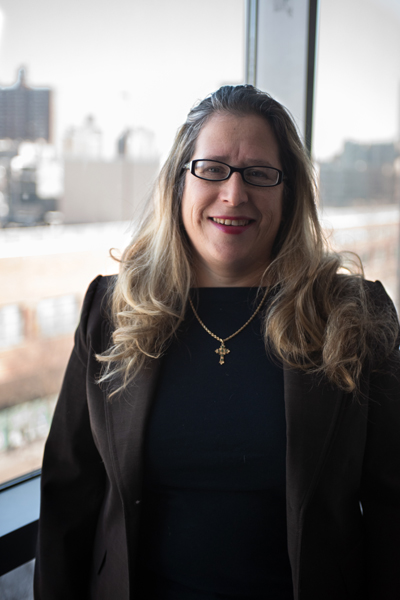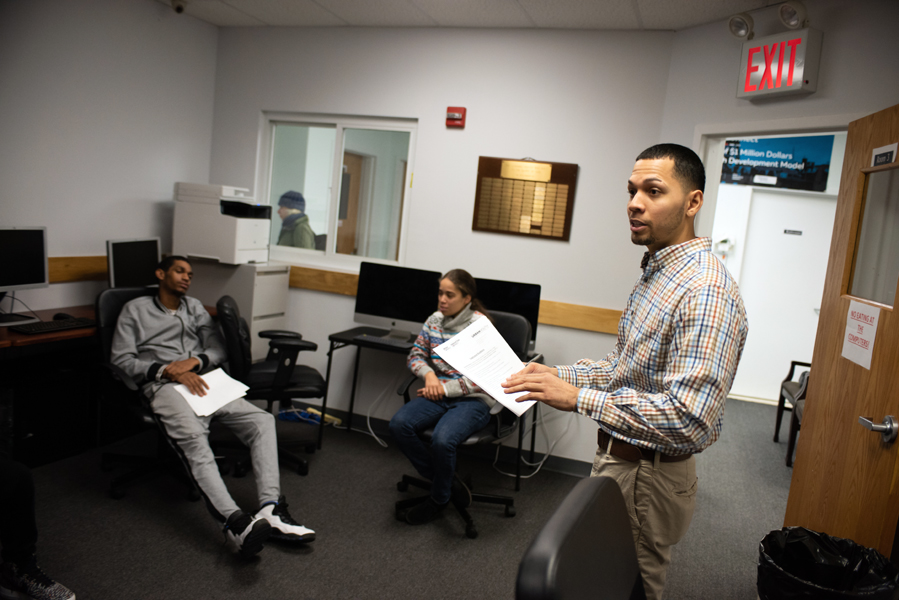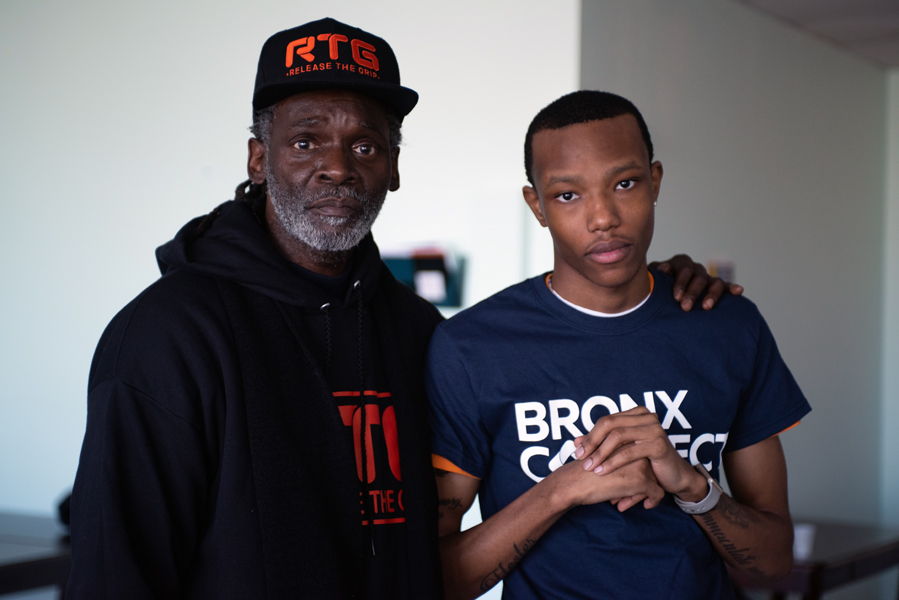NEW YORK — A Bronx nonprofit will receive a $1 million grant from The Rockefeller Foundation and the Chan Zuckerberg Initiative to research, document and expand its youth violence prevention and alternative-to-incarceration programming to another U.S. city. Supporters of the model hope it will set a new standard for the rest of the nation.
BronxConnect was one of the 10 organizations to receive the grant money as part of the Communities Thrive Challenge that seeks to fund grassroots community-driven programs providing alternatives to detention. The program is a collaboration between the two philanthropies, which support criminal justice reform.
“I would say, ‘All great things come from the Bronx,’” said the Rev. Wendy Calderón-Payne, the executive director of the Urban Youth Alliance, the parent organization of BronxConnect.
“We’re excited BronxConnect won one of the 10 coveted slots,” she said. “It’s exciting to see national funders say that there’s something great going on in local communities.”
BronxConnect is part of the city’s extensive network of alternative-to-incarceration and alternative-to-detention programs. In the next two years, it will receive financial support and technical assistance to study what makes its programs successful in reducing gun violence and recidivism rates. Then it will replicate it in another city that is yet to be determined.
“I think it’s a legendary and great accomplishment for the Bronx to be at the forefront of creating what is going to be a national model,” said Eric Cumberbatch, the executive director of the Mayor’s Office to Prevent Gun Violence, speaking at a press event at the organization’s headquarters Thursday morning.
“For us public safety goes well beyond policing. Public safety is about healthy neighborhoods, empowered young people. Our approach is really about empowering community members to be the change and sustain the change that they want to see and make in their own communities. We’re advancing that message and setting the norm and trend across the nation.”
‘Violence interrupters’ from neighborhood

Rev. Wendy Calderón-Payne
Calderón-Payne said what gives BronxConnect an edge is that it invests in the community by recruiting staffers directly from the neighborhoods it serves, connecting with youths at risk and becoming role models in ways other organizations are unable to.
“We’ve been doing it for 10 years,” she said. “Time and time again, our young people would say, ‘If you want me to change, I need to know you came from where I came, I need to know you face the temptations that I face, or the challenges that I face, and that you made better decisions.’”
Twenty-five percent of full-time employees at BronxConnect are formerly incarcerated — and that’s key, Calderón-Payne said.
“There are the best people to speak to our young people,” she said.
Eighty-five percent of staff lives in the Bronx, and all of them are from the borough or nearby, across the river in Harlem.
One of them, Oliver Lafayette Sanford, 60, said his role is to supervise a small team of “violence interrupters” and outreach workers who walk around neighborhoods breaking up arguments and fights — or trying to stop them before they start — that have potential for turning violent.
“They’ll try to de-escalate it, talk to them, ‘Listen, there’s other options, you don’t always have to become violent.’ Both of the kids might be very irate. ‘How about I take you to the movies right now? Buy you something to eat?’” he said.
No one gets hurt, Sanford said. Being from the neighborhood and having the street savvy that comes with that gives outreach workers the credibility and trustworthiness they need to have a pull on youth at risk.
“They’re the ones who hit the pavement,” he said. “They know all the players. They reach out to these guys and through them we get access to their people.”
Sanford has served two sentences in state prison and was arrested 44 times.
“I wish I could say I’ve never been locked up, because there’s nothing cool about that,” he said. “Nothing. But when you’re young and you’re running amuck, you’re reckless, you’re hurting lives, not only yours but other people’s, but you think about that.”
‘I’m positive now’
Kareem, 21, is one of the youths attending the alternative-to-detention program. For seven to 10 months, he will have to come to BronxConnect’s main office three times a week.
“I come here, I get my thoughts off. I apply for jobs, I get ready for job interviews. It helps me to keep track of my goals and stay out of trouble,” he said, “I could have been in jail. So it’s a blessing that actually I’m here. They’re trying to keep me out of jail.”
Wrong decisions landed him into the justice system, but being spared time in the system made him feel he was given a second chance, he said. The trust he felt for the BronxConnect team motivated him to turn his life around, he said.
He wants to be a rapper and hits the studio once a week to work on his music. His biggest challenge right now is not having the financial means to pursue its goals, but the support he’s getting from his community gives him strength and positivity he said he never felt before.
Another participant, a 16-year-old male who wished to stay anonymous, said his life has changed since he began attending BronxConnect 11 months ago.
“When I did what I did to get me in trouble, I dug a hole for myself. This is me covering up the hole with dirt and building from there,” he said. “I’m positive now.”
Some of the staffers in the programs are from the community he used to shoot hoops with.
“We know most of the same people,” he said.
Calderón-Payne said her organization has been checking its performance since it started 20 years ago. BronxConnect’s contracts with the courts depend largely on their performance in keeping recidivism rates low. The one-year recidivism rate for BronxConnect participants is about 17 percent, significantly lower than the 76 percent average for youths who have been released by state prisons, according to the organization’s website.
Calderón-Payne said they monitors rearrests, reconvictions and recidivism rates. She pays particular attention to felony reconvictions as a metric for judging results.
“That is the big issue: If you can avoid a felony, you can actually have a career, you can go on and get high-paying jobs,” she said.

An employment readiness class at BronxConnect.
Low recidivism rates
A 2018 performance study of BronxConnect programs showed that 97 percent of graduating participants avoided felony convictions three years after completing their programs.
Calderón-Payne called it an “absolutely incredible” outcome that was made possible by focusing the organization’s efforts on teaching youths work skills and helping them find jobs. A drop the city’s overall unemployment in recent years contributed to the program’s success, she said.
She’s less interested in tracking lesser offenses, like marijuana arrests, because they are unequally distributed across the city, in a way that is often unfair to the communities she works with, she said.
“I feel there are certain places in the city where you don’t get arrested for marijuana,” Calderón-Payne said, mentioning the area surrounding Columbia University in Manhattan as an example. “Whereas in my neighborhood you’ll get arrested for drugs.”
For more information on Youth Gun Violence Prevention, go to JJIE Resource Hub | Youth Gun Violence Prevention
The de Blasio administration has been supportive of alternative-to-detentions programs such as the one at BronxConnect. Through the Office to Prevent Gun Violence, a division of the Mayor's Office of Criminal Justice, the city already employed more than 300 “credible messengers” — people who are formerly incarcerated — in gun violence prevention programs helping to heal the very communities they grew up in.
Cumberbatch said such programs are a valuable investment in the future of neighborhoods that need resources and vitality to lift themselves up.
“We have a powerful workforce, one of the fastest-growing workforces in New York City,” he said, “This workforce serves as a reentry opportunity, it serves as a recidivism reduction and it also serves to link young people to behavior change and positive outlets.”
Calderón-Payne said she hopes the BronxConnect model would be ready to replicate in one year, and that she is currently considering a short list of cities that could be a good fit.
She declined to say which cities she’s considering because her outreach efforts are still under way. The choice will require careful considerations of political, judicial and cultural balances that need to exist for a program like BronxConnect to thrive.
“We have to find a city that is like the Bronx, that is ripe,” Calderón-Payne said. “You need to have DAs that are willing to look at reform, you need to have politicians that are willing to look at reform. You always need to have Legal Aid lawyers that want to look at reform, and you need community members that want to support their community. You really have to have this wonderful mix of everything,” she said.
There are many challenges in expanding the success of programs such as BronxConnect in other cities, most of which can’t match the advantages of an economy as strong as New York City’s. But she is confident the expertise and grassroot work of her nonprofit will help turn the tide of reform.
“Who knows, maybe in 10 years we’ll be in five new cities. Wouldn’t that be amazing?” she said. “Wouldn’t that be incredible for the future of criminal justice reform — to have a documented model that works?”
